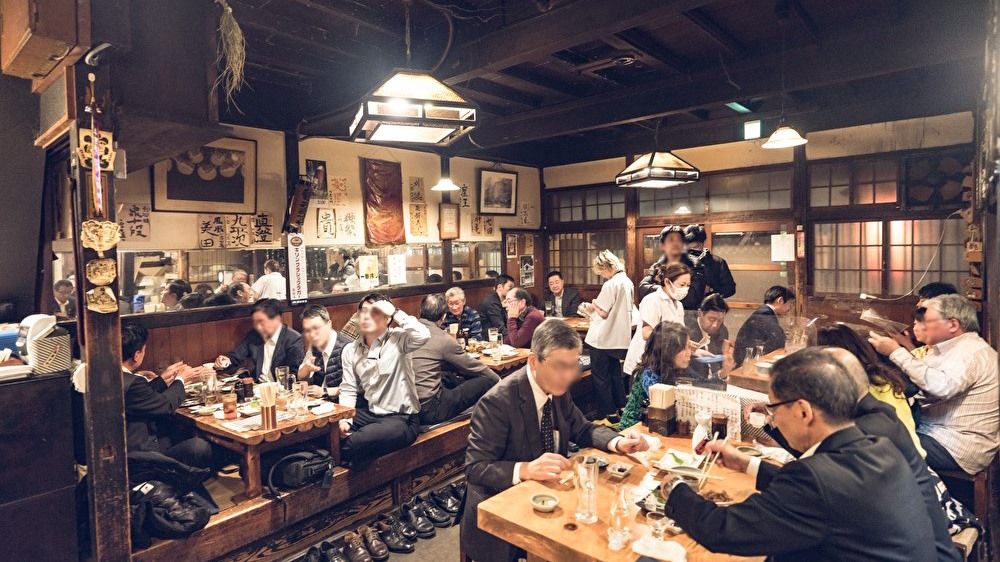
A Century of Dining and Drinks: Tokyo’s Oldest “Izakaya” Are Deliciously Charming
Food and Drink Culture Guide to Japan- English
- 日本語
- 简体字
- 繁體字
- Français
- Español
- العربية
- Русский
Mimasuya: A Dining Icon in Kanda
Opened in 1905, the izakaya Mimasuya oozes character, from the swaying red lantern and rope noren curtain at the entrance to its copper-sided exterior. Tucked away on a nondescript side street in Tokyo’s Kanda district, the shop ushers customers past sliding doors and into the warm embrace of a small, well-worn dining room of wooden paneling and tatami mats. A small Shintō altar under the darkly lustered ceiling watches over the scene, adding a crowning touch to the old-fashioned atmosphere.
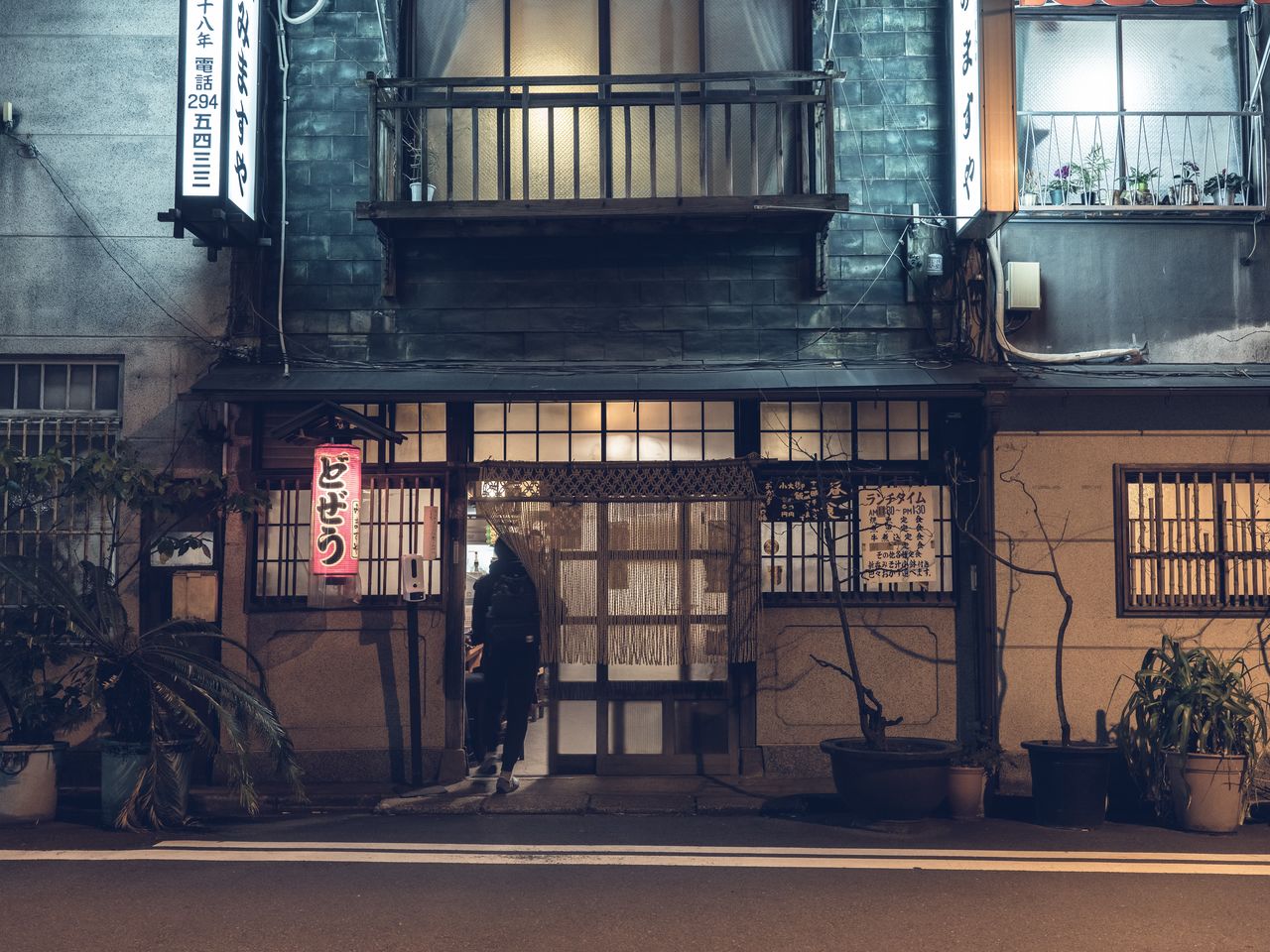
The exterior of Mimasuya. Open from the early evening, the shop draws lines of hungry and thirsty patrons even on weekdays. (© Matsuzono Tamon)
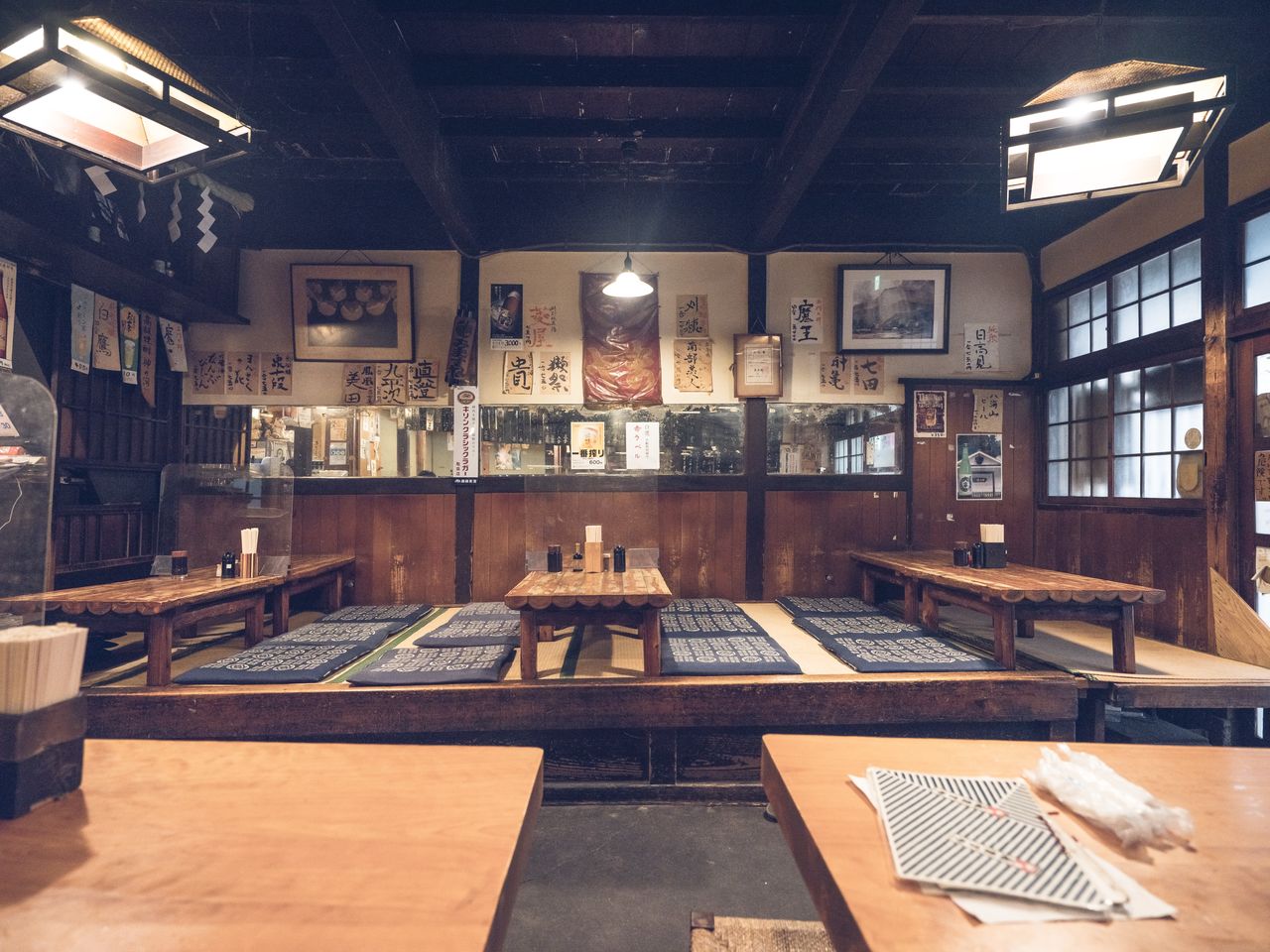
The dining area is pleasantly antiquated. (© Matsuzono Tamon)
Mimasuya’s fourth-generation head Okada Kaori proudly explains that the izakaya has weathered war, pandemics, and natural disasters over its long history. “The original structure was destroyed in the 1923 Great Kantō Earthquake,” she describes. “But after five years of scrimping and saving, the founder rebuilt the shop. We shut again during World War II when there was no sake to be had and everything metal, including the ladles, was requisitioned for the military.” During the Allied bombing of the city, the building was spared from the ensuing conflagration thanks to the efforts of bucket brigades that saved much of the Kanda area. “We didn’t close down even once after that until the pandemic hit.”
Kanda has a long legacy as a commercial center, and Mimasuya built its reputation serving the hard-working laborers and residents of the area, who would fill the shop after finishing their shifts at printers and other workshops in the neighborhood. These businesses have largely been replaced by office buildings, whose workers now crowd the shop’s dining room on weekdays and weekends alike. In a change from the past, the clientele now includes groups of young women, and increasingly foreign tourists, who come to enjoy the atmosphere and fare.
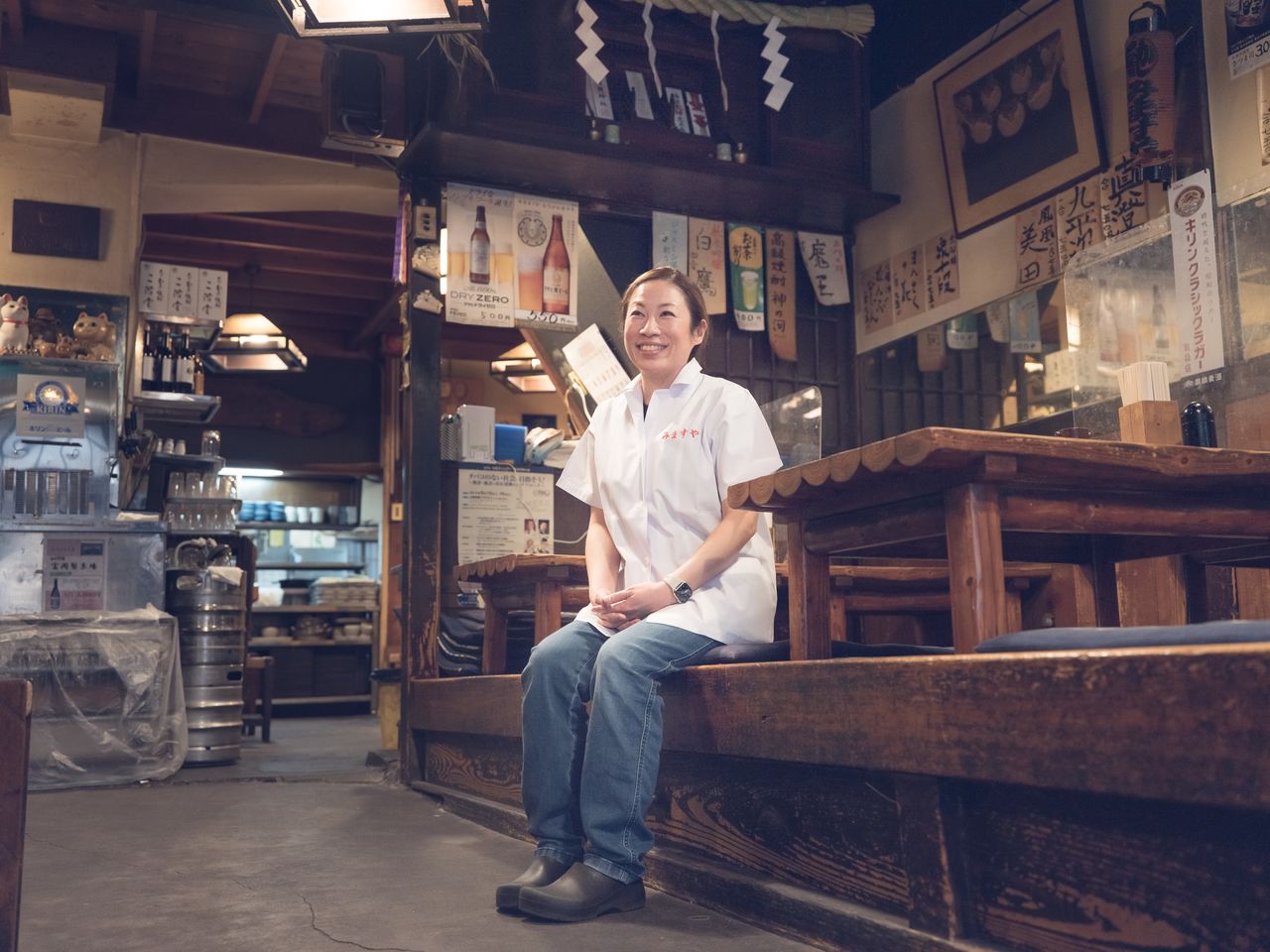
Mimasuya’s fourth-generation manager, Okada Kaori, recently took the reins of the business from her father Katsutaka, who stepped down in the wake of the pandemic. (© Matsuzono Tamon)
Upholding Tasty Traditions
Mimasuya owes its century-long success to a simple understanding: offer customers delicious, filling comfort foods that are gentle on the wallet and they will keep coming back. The izakaya has a menu filled with traditional favorites. Okada ranks the top five popular dishes as gyū nikomi (stewed beef), yakitori, dojō no maruni (stewed whole loaches), Yanagawa nabe (loaches simmered with egg), and baniku no sakurasashi (horse meat sashimi). She puts stewed beef, a dish dating to the second-generation owner, as the overall favorite, although she admits that nikudōfu (simmered beef and tōfu) is a close second among dishes of that type. “They’re both standards, and there are scores of customers who, depending on which camp they fall into, ask for one or the other as a matter of course.”
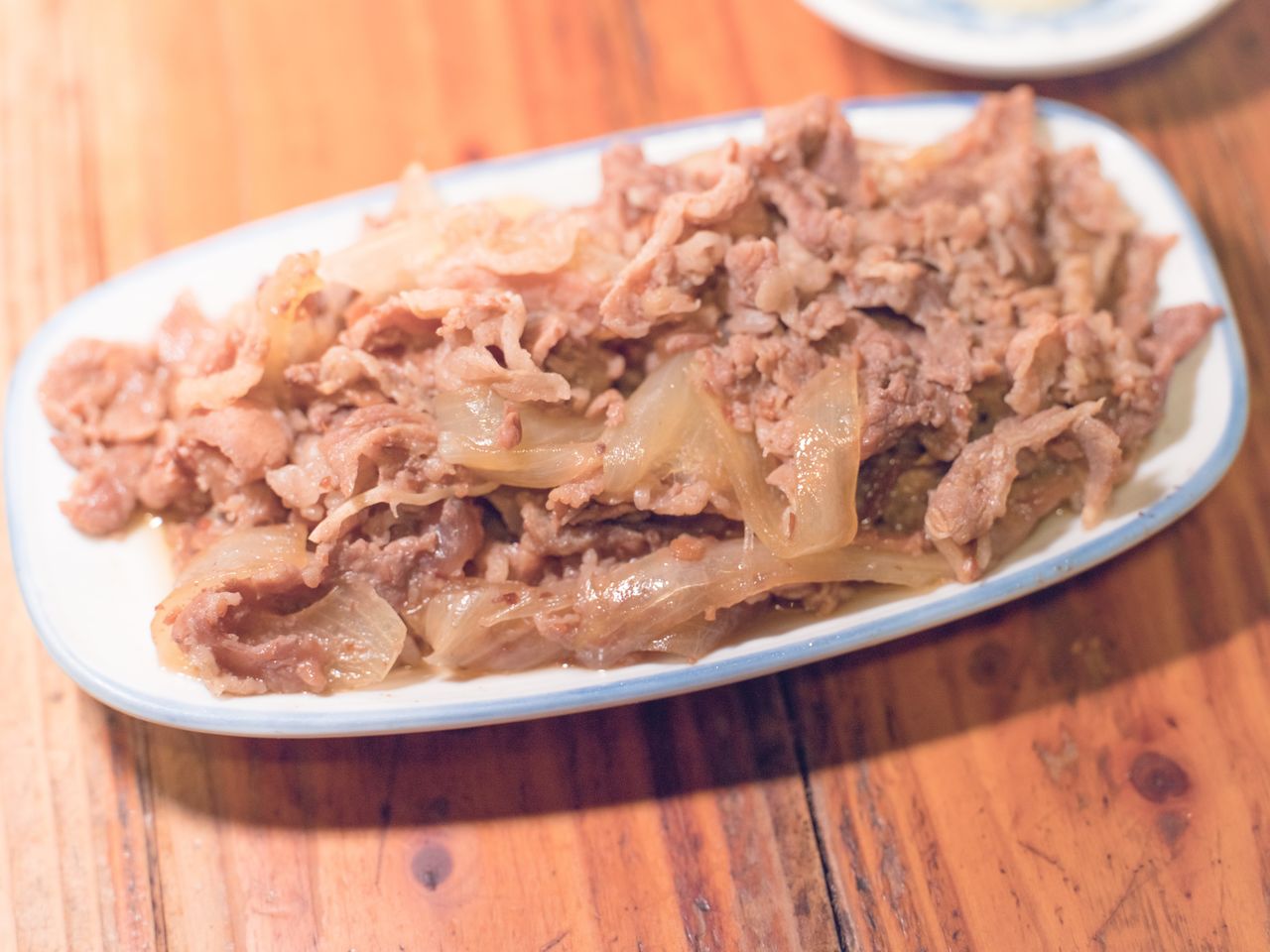
A plate of Mimasuya’s famous gyū nikomi. (© Matsuzono Tamon)
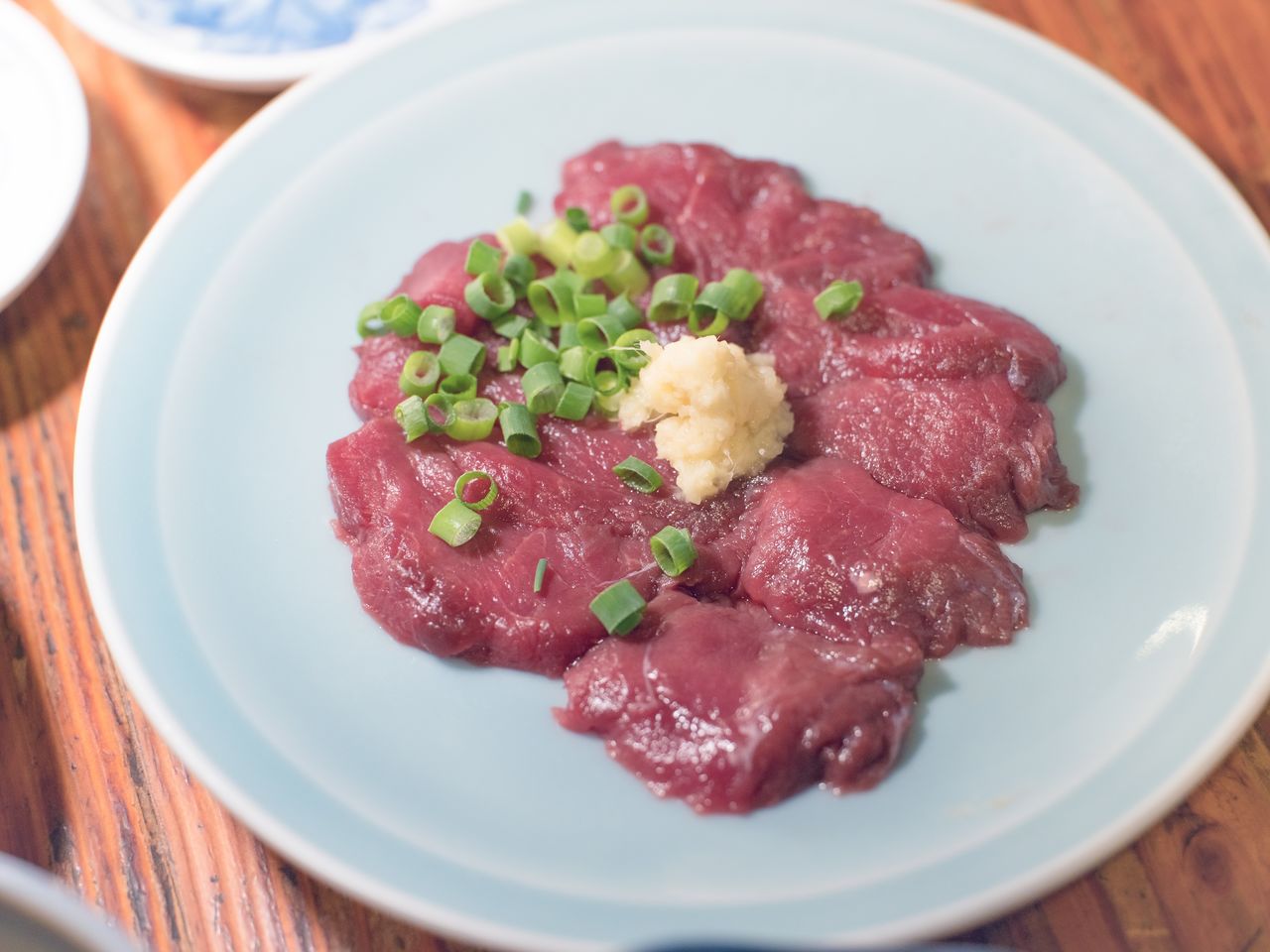
Baniku no sakurasashi. (© Matsuzono Tamon)
Loaches are a classic delicacy, the small, freshwater fish having been popular with residents since before the city changed its name to Tokyo. A normal meal featuring a range of dishes typically runs around ¥5,000 per person, which considering the heartiness of the traditional fare is a reasonable price for a night out in the metropolis.
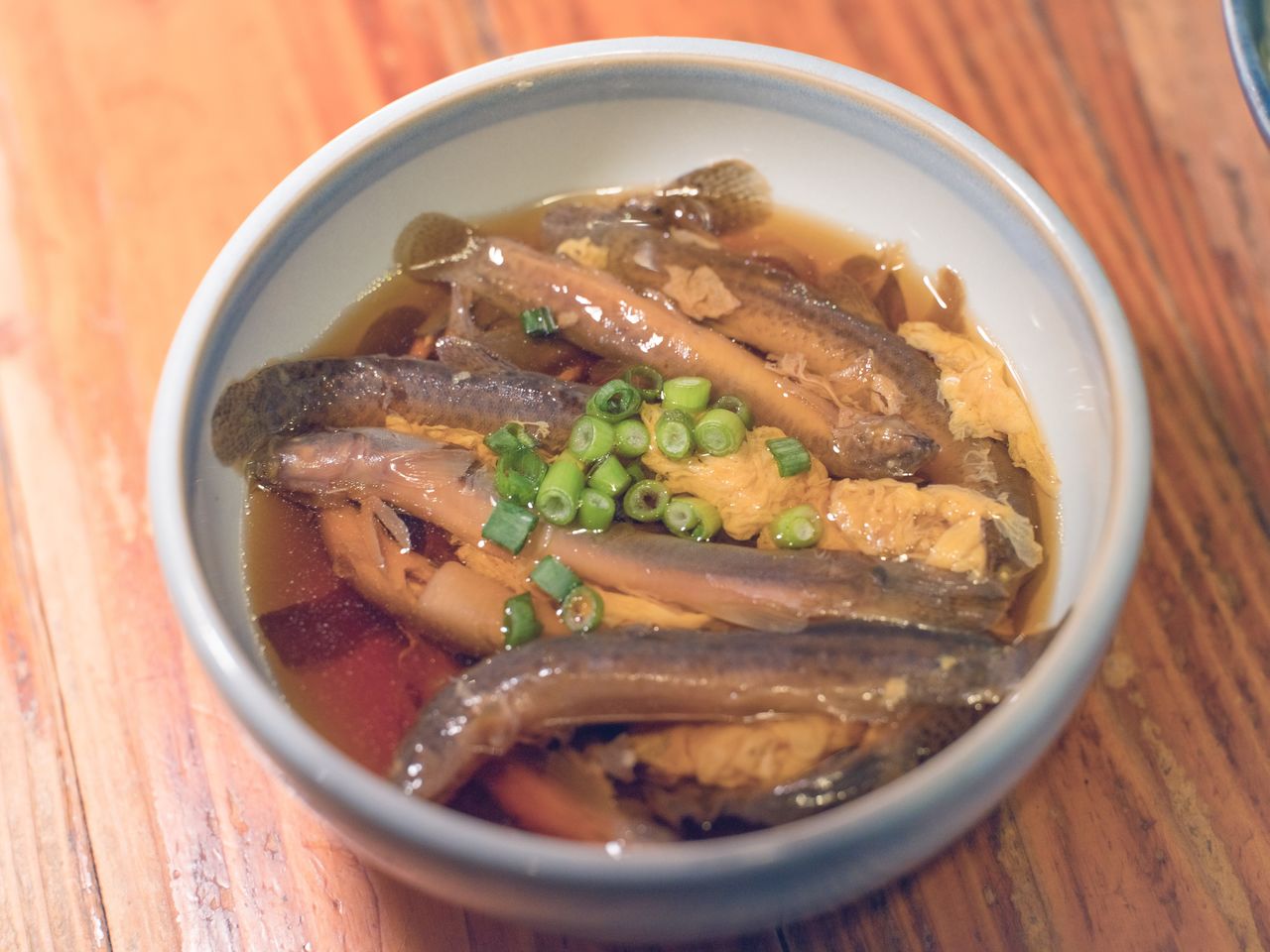
Succulent dojō no maruni. (© Matsuzono Tamon)
In the manner of many older Japanese-style pubs, Mimasuya’s menu is displayed on a collection of long, rectangular boards posted along the wall of the establishment. Offering further proof of the restaurant’s legacy as a working-class izakaya, the names of items, most hand-written by Okada Kaori’s father when he ran the shop, have faded with age, some to the point of being barely legible. “I only rewrite a sign when the price goes up,” says the current head, something that she insists occurs seldom. “The rising costs of doing business make it tough, but I was taught to assume that I’d be the last in line if I increased prices.”
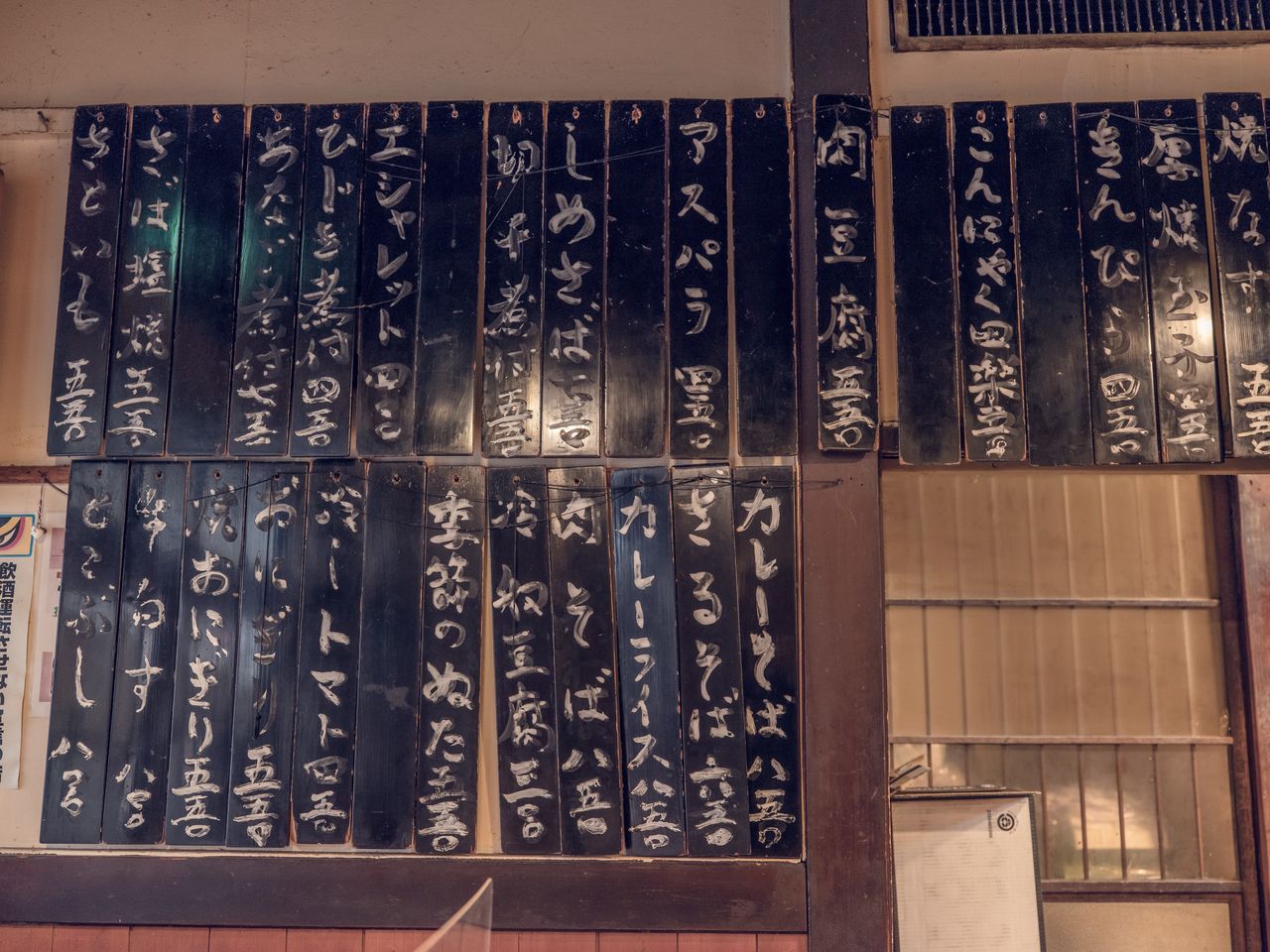
Menu items displayed on Mimasuya’s wall. (© Matsuzono Tamon)
Yamashiroya Sakaba: An Oldie but Goody
A short jaunt by bus from Mimasuya is another century-old izakaya, Yamashiroya Sakaba. Sitting in the shadows of large commercial facilities and high-rise condominiums in Kōtō’s Nishi-Ōshima neighborhood, it got its start in the historical Fukagawa area in 1897 as a kaku-uchi—a sake liquor store stand where customers could consume their purchase. It moved to its present location in 1953 and became a full-fledged izakaya. The exterior of the shop, with its weathered sign and bowed pole supporting a well-worn noren curtain, exudes an authenticity found only with age.
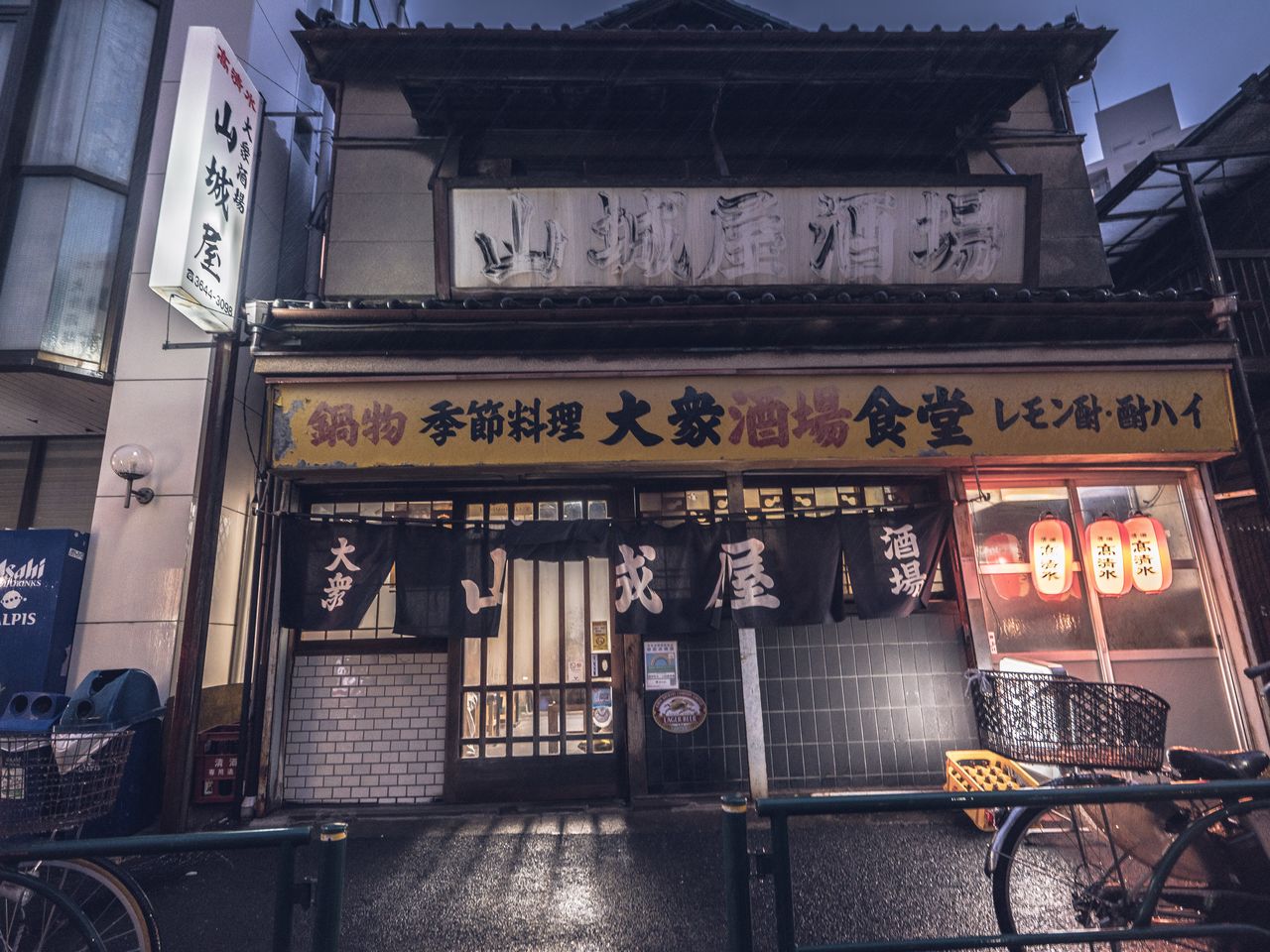
Yamashiroya Sakaba sits on the bustling Kiyosubashi-dōri. (© Matsuzono Tamon)
Hanzawa Seiji, the fourth-generation proprietor of the shop, says the izakaya built its reputation serving the residents of the once working-class neighborhood. Speaking to the liveliness of that time, he says, “There was a commercial street with all manner of businesses—greengrocers, dining halls, shoe shops, drug stores—you name it.” Sitting nearby is his sister Harumi, who helps run the pub. “There were loads of small factories, transport firms, and even a scrap metal yard,” she chimes in, adding plaintively that “they’ve all been replaced by condominiums, though.”
Hanzawa describes how during the booming economy of the 1980s and early 1990s it was not uncommon for groups of five or six customers, clad in work uniforms, to come in and knock back a few drinks to get charged up for their night shift. “When things were really hopping during the bubble era, you had people who would slap down a ten-thousand yen note and then wave off the change.”
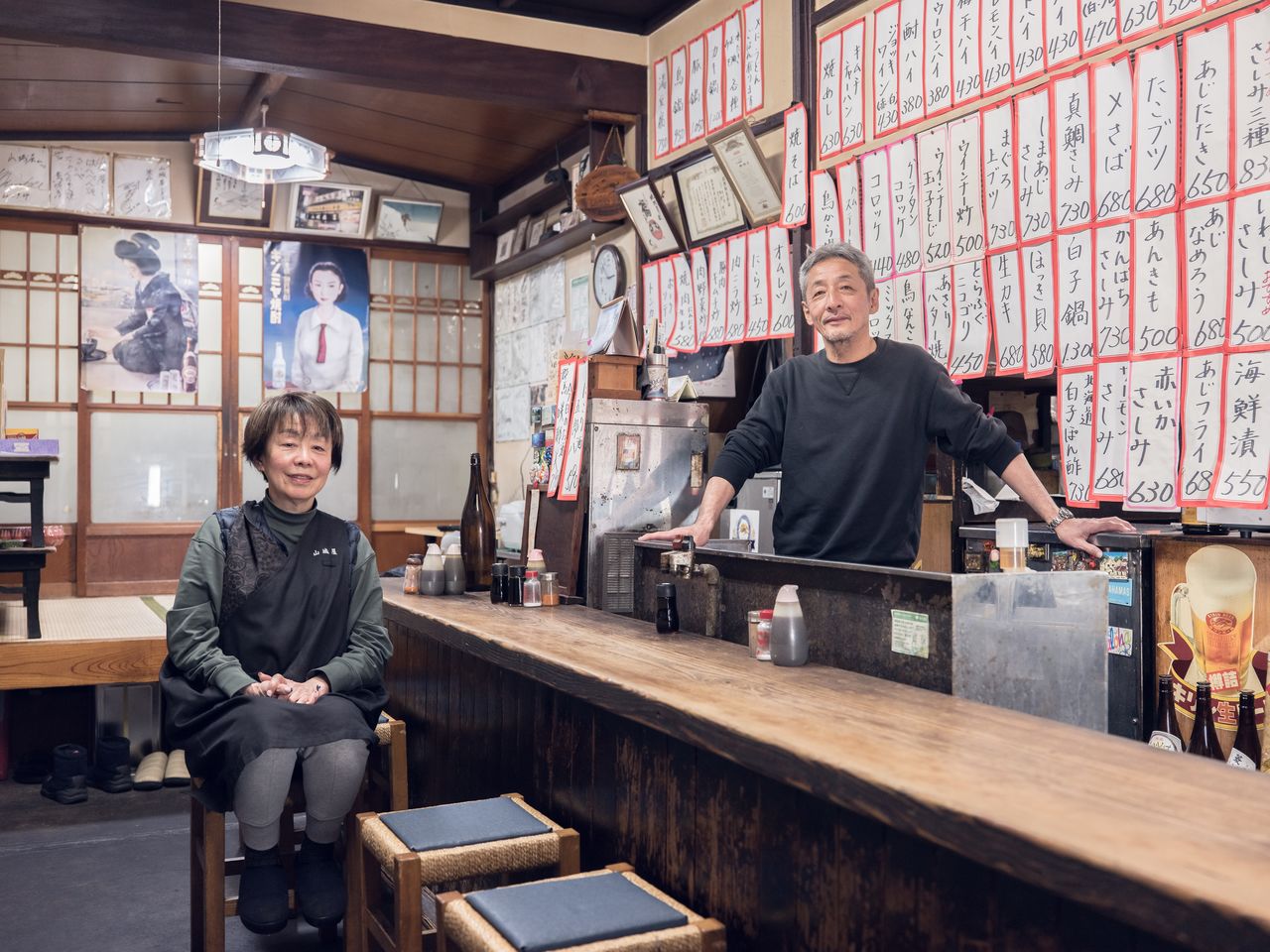
Hanzawa Seiji (right) and his sister Harumi. (© Matsuzono Tamon)
Sitting in the confines of the cozy dining area and hearing the pair recount the past, it is easy to imagine the thrumming of customers spread along the counter or sitting packed around one of the tables, shouting out orders with a cool familiarity.
The motley atmosphere inside Yamashiroya Sakaba differs considerably from that at Mimasuya. Both shops display menu items on their walls, but the strips of paper at Yamashiroya Sakaba take up nearly the entire wall above the counter. They even hang over the opening to the kitchen, requiring Harumi to move the dangling pieces aside like a curtain each time she calls out an order to her brother in the back.
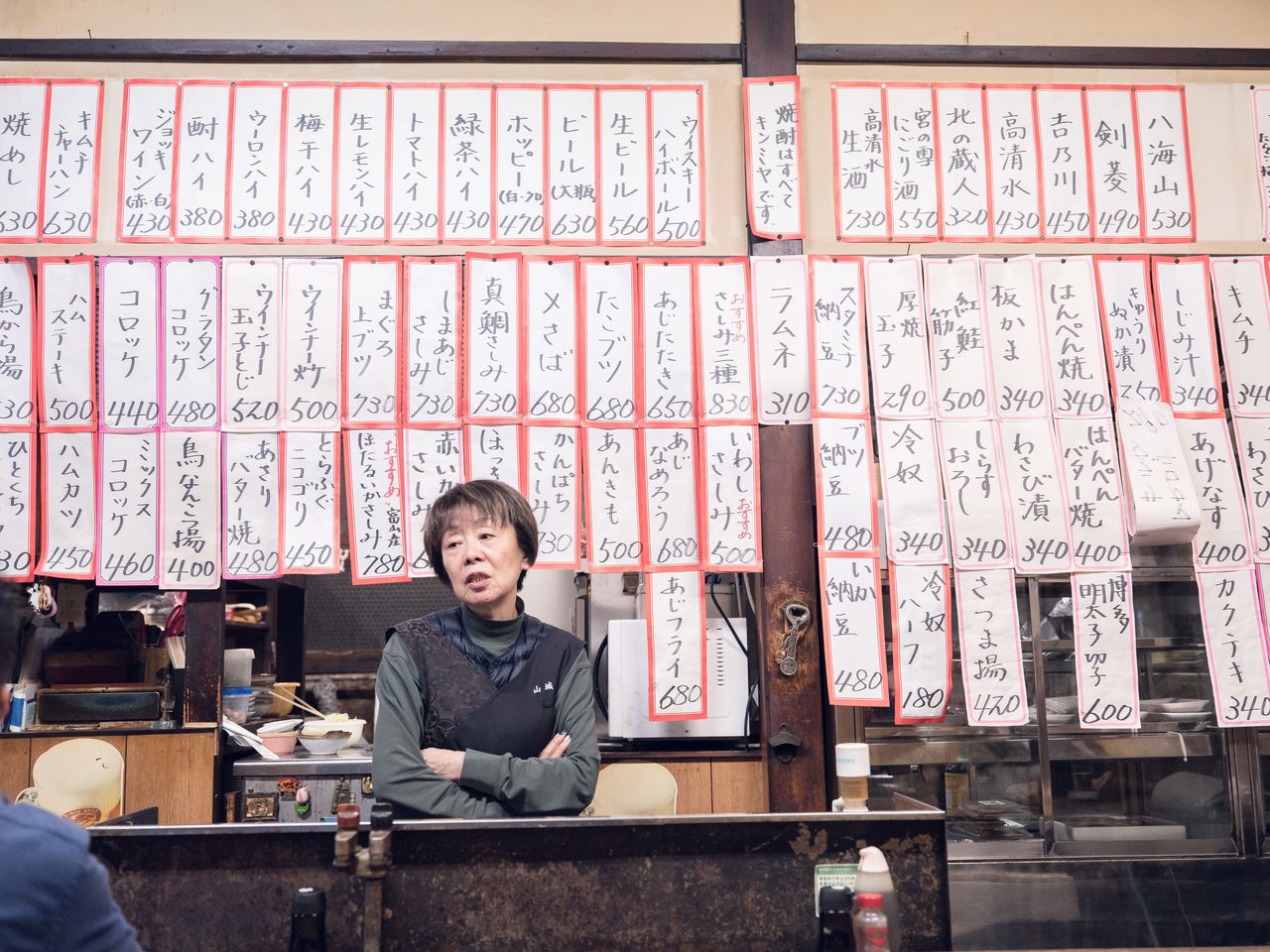
Yamashiroya Sakaba boasts a broad selection of menu items at affordable prices. (© Matsuzono Tamon)
Popular Favorites
Pressed to choose among the izakaya’s massive selection, Harumi lists the top five as niratama (garlic chives and eggs), hamukatsu (breaded, fried ham cutlet), chopped tuna meat, the three-variety sashimi set, nukazuke (cucumbers pickled in rice bran), and motsuni (pork tripe stew)—the last, she notes, is only available on Saturdays. The nukazuke cucumbers are an especial point of pride. “We still pickle them by hand,” she declares, “just as our grandmother did when she ran the shop.”
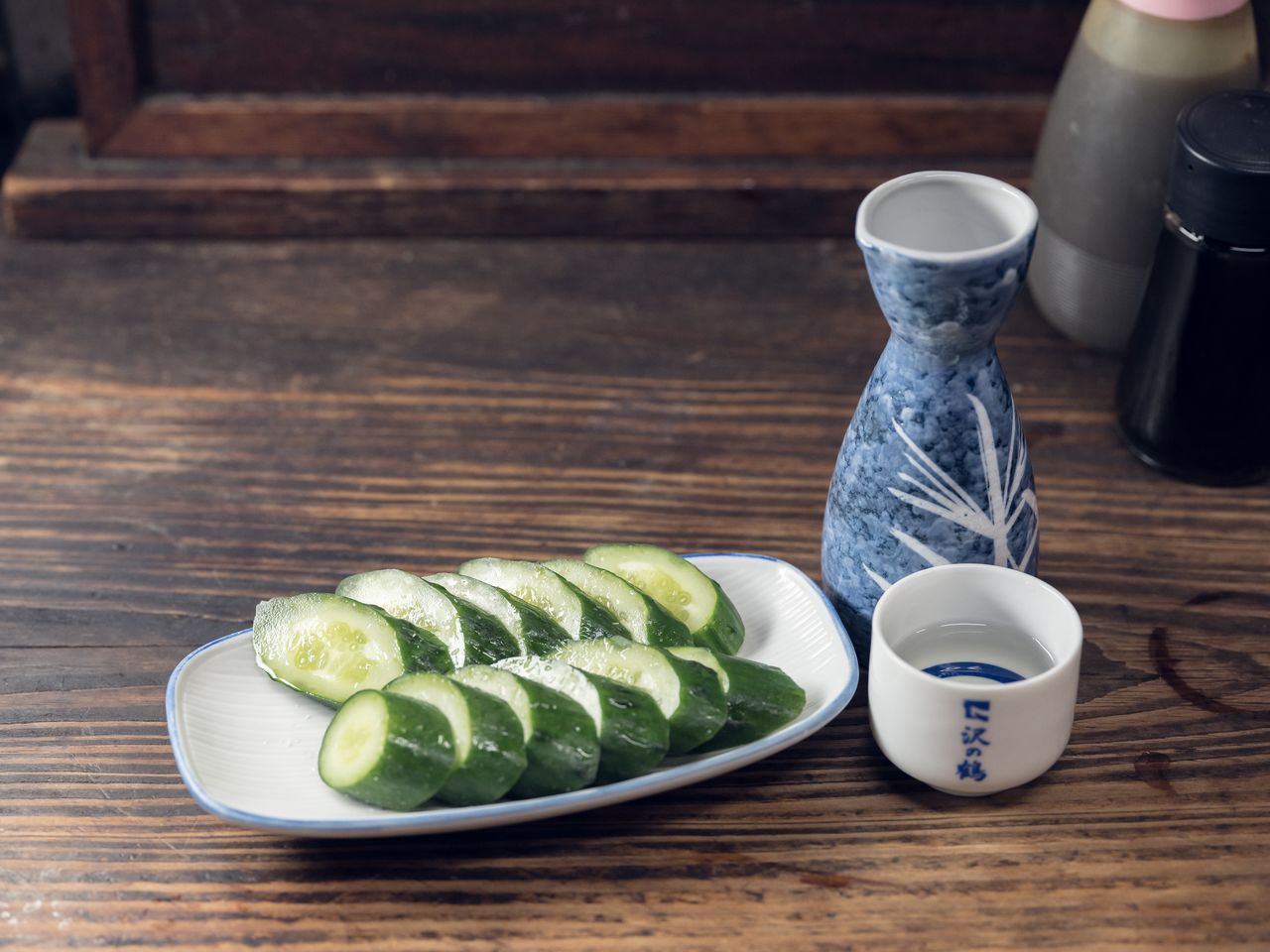
A plate of nukazuke goes great with sake. (© Matsuzono Tamon)
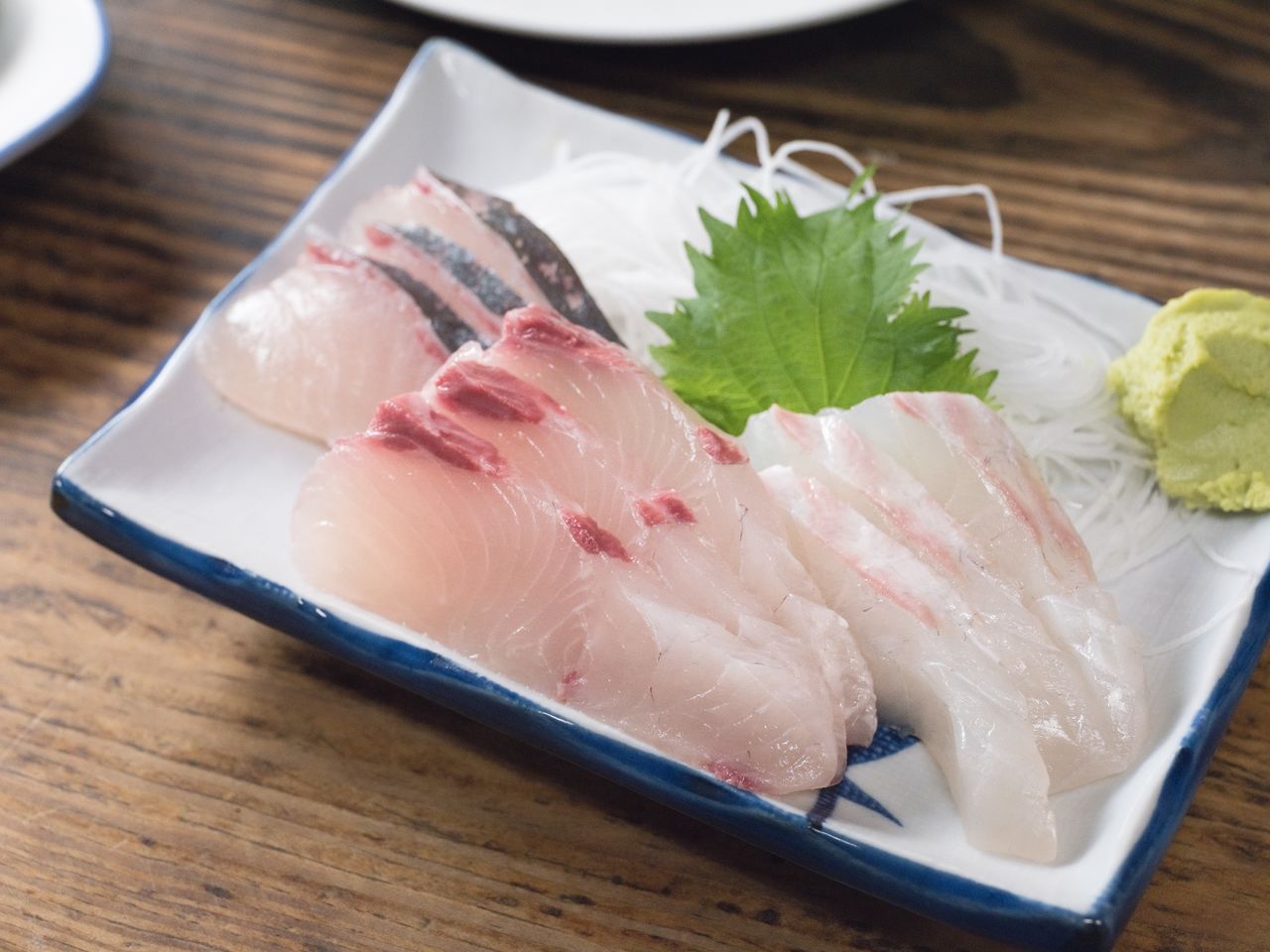
The three-variety sashimi plate is a long-running favorite of customers. (© Matsuzono Tamon)
The shop offers a wide selection of homestyle fare, with dishes like fried chicken, potato salad, and Japanese-style fried rice that customers have enjoyed since their childhoods. Hanzawa keeps prices low, and average evening of eating and drinking will set patrons back around ¥3,000 a head, but leave them feeling satisfied.
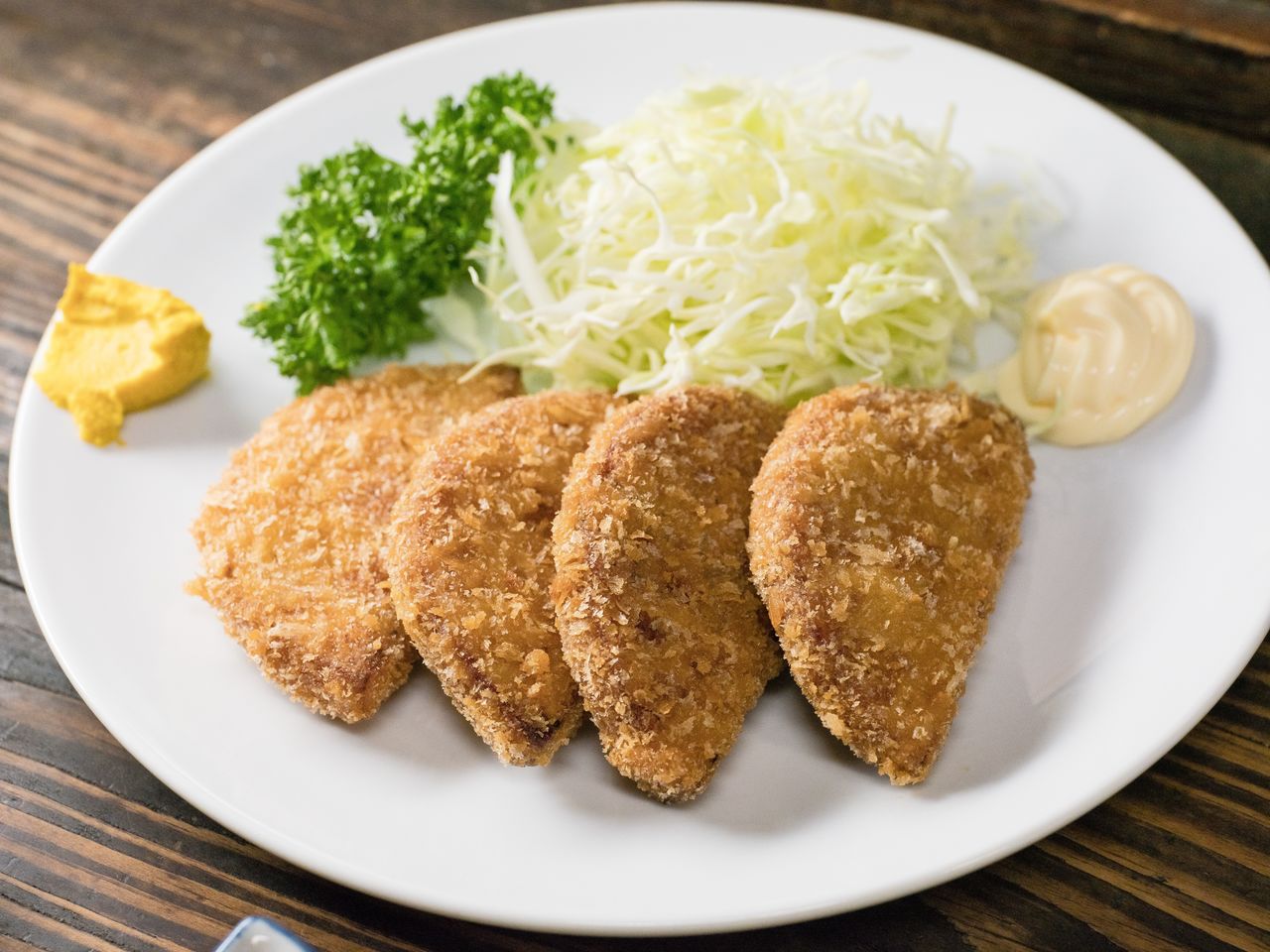
Ham cutlets served with shredded cabbage. (© Matsuzono Tamon)
The droves of manual laborers and others who once frequented Yamashiroya Sakaba have given way to a new wave of residents, and the atmosphere of the izakaya has subsequently mellowed. “A lot more young people come in now,” comments Harumi. “Couples and the such. But it’s not unusual for a young woman to drop in alone.”
For newcomers, the time-worn outward appearances of Mimasuya and Yamashiroya Sakaba may be a hurdle to stepping through the noren. But inside awaits a warm, inviting atmosphere of food and friendly smiles. Both shops have weathered challenges big and small over the last century by winning the hearts—and stomachs—of generations of hungry customers. Their legacies seem certain to continue as long as people long for a familiar place to eat, drink, and socialize.
Century-Old Izakaya in Tokyo
- Kagiya (founded in 1856): 3-6-23-18 Negishi, Taitō
- Ōhashi (1877): 3-46 Senjū, Adachi
- Taguchiya (1887): 2-6-11 Tokiwa, Kōtō
- Yamashiroya Sakaba (1897): 1-6-8 Minamisuna, Kōtō
- Kishidaya (1900): 3-15-12 Tsukishima, Chūō
- Mimasuya (1905): 2-15-2 Kanda Tsukasamachi, Chiyoda
- Otafuku (1915): 1-6-2 Senzoku, Taitō
- Naganoya (1915): 3-35-7 Shinjuku, Shinjuku
- Akagaki (1917): 1-23-3 Asakusa, Taitō
(Originally published in Japanese. Banner photo: Customers fill the interior of century-old izakaya Mimasuya. © Matsuzono Tamon.)
